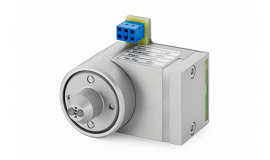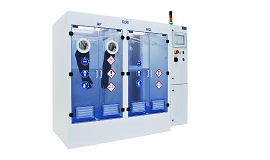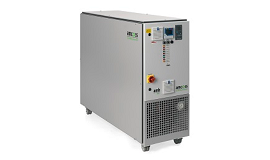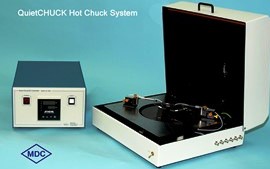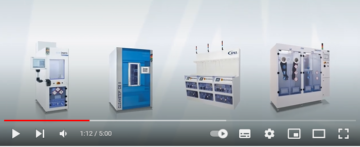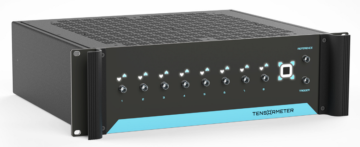Troubleshooting Mercury Droplet Issues
Mercury droplets left on the semiconductor wafer or on the measurement platform of a Mercury Probe can be an annoyance and a safety issue. However, the problem can usually be mitigated once the cause is understood.
GENERAL RULES:
1. Verify your vacuum level. A vacuum that is too high or too low can cause the probe to act erratically.
2. Always clean the measurement platform with an IPA/water dampened cloth and blow dry the surface before every measurement session. This will remove most contamination.
3. Blow off the surface of measurement platform and wafer each time a wafer is to be placed on the measurement platform. This will remove any particles that can scratch the platform or wafer.
4. Verify the mercury level in the vials. Too much mercury can cause droplets. Too little mercury will cause loss of electrical contact.
TYPES OF DROPLETS:
Possible causes for mercury droplets are outlined below along with appropriate solutions:
A. Large droplets of Mercury in the outer contact ring may indicate these possible problems:
1) A blocked vacuum valve or solenoid that is not drawing enough vacuum when the control arm is in the Purge position.
To check this, without a wafer on the measurement platform, lift the back contact arm and put the control arm in the purge position. You should be able to hear the sound of air rushing into the probe. The mercury in the vials should be agitated by the rush of air. Droplets of mercury may be pulled into the traps. This is normal. If the valve or solenoid is blocked, or a tube is disconnected or leaking, then there will be little or no sound from the platform. Repair or replace the valve, solenoid, or tubing, depending on the type of Mercury Probe.
2) The control arm is being moved too quickly between the Measure position and the Load position. Moving the arm past the purge position too fast does not allow enough Purge time. Monitor the capacitance meter reading in the Purge position before and after a measurement. If the capacitance is noticeably higher after the measurement, it is an indication that there may be a droplet of mercury in the ring. Pause in the Purge position for 1 or 2 seconds. Sometimes it helps to go to the Purge position, then back to the Measure position for two or three seconds, and then back to the Purge position. This often will pick up any stray drops of mercury.
3) There are scratches or contamination in the outer contact ring. Contamination in the ring or a rough surface will make the mercury adhere to the sides or bottom of the ring.
Try cleaning the contact ring with a pointed cotton swab or a small piece of cotton dipped in IPA. Hold the cotton with a fine tip tweezers. If platform is scratched, return to MDC for resurfacing.
4) The mercury is contaminated. Contaminated mercury will lose its high surface tension and adhere to most surfaces. Cleaning the Mercury Probe will require cleaning the surface of the measurement platform, the capillaries, and the mercury vials to remove the contamination.
a. Remove the contaminated mercury vials and dispose of the mercury in a safe manner.
b. Remove the top arm from Mercury Probe.
c. Place probe over a container to catch any mercury droplets and contamination. Flush platform capillaries with IPA/water and blow out capillaries to dry.
d. Clean the measurement platform with an IPA/water dampened cloth and blow dry.
e. Reinstall top arm and install cleaned glass vials with new mercury.
B. Fine droplets on the wafer surface, measurement platform, or both may indicate these possible problems:
1) Vacuum Level
If the vacuum level is too high, the mercury can splatter against the surface of the semiconductor and leave small droplets, usually in the shape of the ring contact, on the surface of the wafer.
2) Surface Scratches
If the surface of the measurement platform is damaged or worn, this can allow too much air to leak across the surface and allow the mercury to draw up too fast causing the splattering. Return the platform to MDC for resurfacing.
3) Surface Contamination
Surface contamination can hold the wafer off the surface of the measurement platform. This can also allow excessive air leakage and cause the mercury to splatter. Clean measurement platform and wafer.
4) Wafer Flatness
If a wafer is not flat, there will be excessive air leakage that will cause the mercury to splatter.
C. Special Case – Mapping Mercury Probe
When making a measurement, turn the BACK CONTACT VACUUM switch OFF. If the back contact vacuum is left on during a measurement, the vacuum distorts the wafer. This makes poor contact between the wafer and the measurement platform, which results in mercury droplets on the platform.

